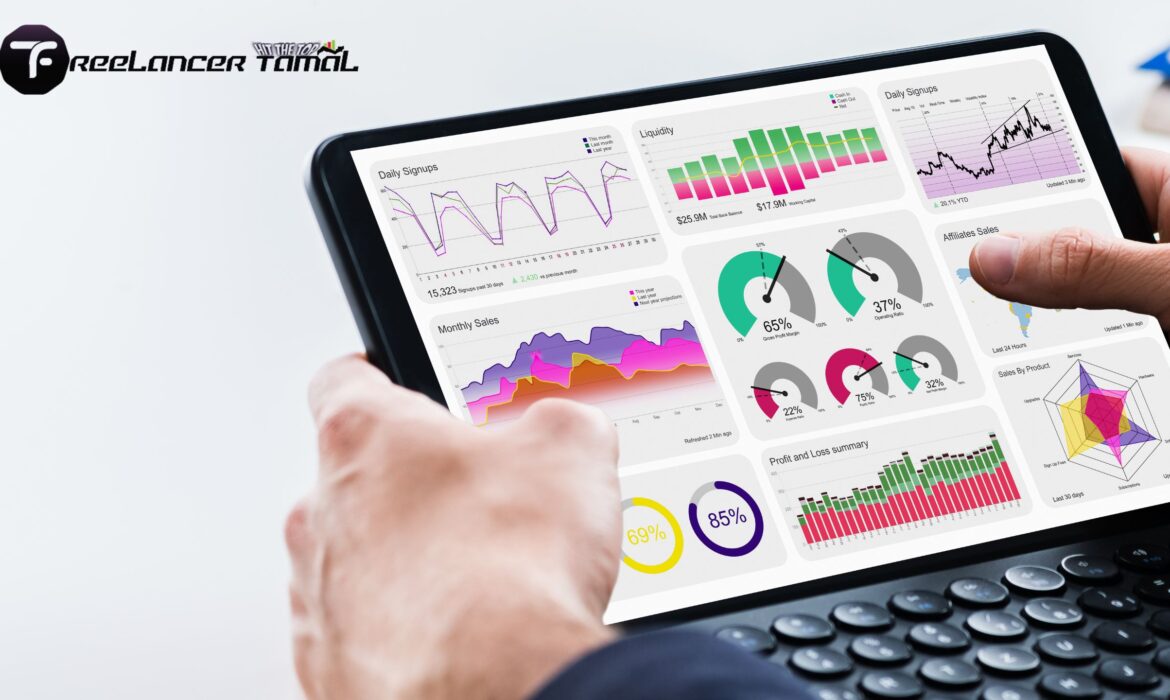
Understanding Website Analytics
Before diving into the specifics of website analytics tools, it’s crucial to understand what website analytics is and why it’s vital for digital marketing success.
What is Website Analytics
Website analytics is the practice of collecting and analyzing data related to user interactions with a website. This process provides valuable insights into user behavior, such as where visitors originate, which pages they frequent, and the duration of their visit on the site.
Website analytics tools, such as Google Analytics, provide detailed insights into website visitors, traffic sources, popular pages, bounce rates, and more (Boomcycle). These tools are essential components of the digital marketing landscape, along with keyword research tools, social media management tools, email marketing tools, and content marketing tools.
Importance of Website Analytics
The importance of website analytics shouldn’t be underestimated. Effective implementation of website analytics is critical for optimizing website performance and driving business growth. It provides valuable insights into user behavior, preferences, and trends, enabling data-driven decision making for website improvements.
Website analytics tools offer valuable data for making informed decisions, improving user experience, and optimizing marketing strategies. They play a crucial role in identifying strengths and weaknesses in your website’s performance, allowing you to tailor your strategies to your audience’s needs and preferences.
Stay tuned as we further delve into website analytics tools in the next section, ‘Exploring Website Analytics Tools’. These tools will help you dominate the digital world, leveraging data to optimize your website and achieve online success.
Exploring Website Analytics Tools
In the journey of understanding website analytics, it’s beneficial to familiarize oneself with the range of website analytics tools available. Let’s take a closer look at some of the most popular ones: Google Analytics, Hotjar, Crazy Egg, SEMrush, and Adobe Analytics.
Google Analytics
Google Analytics is the most popular website analytics tool, used by over 50% of websites according to a source. It’s a comprehensive tool that offers insights on website traffic, user demographics, behavior, and conversions. Google Analytics is excellent for tracking both micro and macro goals and can easily be integrated with other digital marketing tools. This powerful tool is a staple in any digital marketer’s toolbox.
Hotjar and Crazy Egg
Hotjar and Crazy Egg are analytics tools that specialize in user behavior analysis.
Hotjar provides heatmaps, session recordings, and feedback polls to understand how users interact with a website. This data assists in identifying user behavior patterns and areas of the site that are attracting or repelling users.
Meanwhile, Crazy Egg specializes in visual analysis, offering heatmaps, scrollmaps, and clickmaps to visualize user behavior and optimize website design (Mailchimp). These insights can significantly aid in improving site layout, user experience, and ultimately, conversion rates.
These tools are particularly useful for websites focusing on user experience optimization and conversion rate improvement.
SEMrush and Adobe Analytics
SEMrush and Adobe Analytics are more comprehensive tools that offer a wide range of features beyond basic website analytics.
SEMrush is an all-in-one tool that combines website analytics with SEO and competitive analysis, allowing users to track keyword rankings, organic traffic, and competitor strategies (Mailchimp). It’s a great tool for businesses looking to scale their online presence and stay ahead of competitors.
On the other hand, Adobe Analytics is often used by larger businesses with more complex needs. It offers in-depth analytics, segmentation, and predictive marketing capabilities. This tool can be a little more complicated to navigate but provides a wealth of data and insights for those who know how to use it.
To choose the right tool for your needs, consider the size of your website, the objectives you have in place, and the level of detail you need from your analytics. Also, don’t forget to check the compatibility of these tools with other digital marketing tools you might be using.
Metrics Provided by Website Analytics
Website analytics tools offer a variety of metrics that can provide invaluable insights into your website’s performance, user behavior, and conversions. These metrics are integral in understanding how users interact with your site, identifying areas for improvement, and ultimately, optimizing the user experience.
User Behavior Metrics
User behavior metrics offer insights into how users interact with your website. These metrics can include page views, bounce rate, time on site, click-through rate (CTR), user demographics, search queries, and more (LinkedIn). By monitoring these metrics, I can understand the preferences of my visitors, their level of engagement, and make improvements to better cater to their needs.
| Metrics | Description |
|---|---|
| Page Views | Number of pages viewed by users |
| Bounce Rate | Percentage of users who leave after viewing only one page |
| Time on Site | Average duration of a user’s visit |
| Click-Through Rate | Percentage of users who click on a specific link |
| User Demographics | Information about users’ age, gender, location, etc. |
| Search Queries | Keywords and phrases users use to find your site |
Conversion Metrics
Conversion metrics measure the effectiveness of your site in driving users to complete desired actions. These actions can range from making a purchase, subscribing to a newsletter, or downloading a resource. Key conversion metrics include conversion rate, which is the percentage of visitors who complete a desired action. Monitoring these metrics can help me understand the effectiveness of my strategies and make necessary adjustments for improvements.
| Metrics | Description |
|---|---|
| Conversion Rate | Percentage of users who complete a desired action |
Performance Metrics
Performance metrics offer insights into the technical performance of your website. These can include load times, page speed, and error rates. By analyzing these metrics, I can identify any technical issues that might be hindering the user experience and take targeted action to mitigate these problems (LinkedIn).
| Metrics | Description |
|---|---|
| Load Times | The amount of time it takes for a page to fully load |
| Page Speed | The speed at which content is delivered |
| Error Rates | The number of errors encountered by users |
In conclusion, metrics provided by website analytics tools can give me a wealth of insights about my website’s performance, user behavior, and conversions. By leveraging these insights, I can continuously improve my site and ensure it delivers a great user experience. For more information on other digital marketing tools, check out my articles on keyword research tools, social media management tools, and email marketing tools.
Implementing Website Analytics
Getting started with website analytics might seem daunting, but with a clear plan in place, I can assure you it’s simpler than it seems. Let’s break it down into three key steps: setting goals and objectives, selecting the right tool, and ensuring accurate tracking codes.
Setting Goals and Objectives
The first step in implementing effective website analytics is to clearly define my goals and objectives. This gives me clarity on what I want to achieve and allows me to align my analytics efforts accordingly. I’ll be setting specific and measurable goals, such as increasing conversions, and tracking relevant metrics like click-through rates and conversion rates to measure progress (AI Contentfy).
By setting goals and objectives, I can focus my efforts and ensure that I’m using my website analytics tools to their full potential. This is an essential part of making data-driven decisions and optimizing my marketing strategies.
Selecting the Right Tool
The next step is choosing the right analytics tool. There are several factors I need to consider, including the depth of data provided, ease of use, customization options, and integration capabilities. Some of the popular options include Google Analytics, Adobe Analytics, Kissmetrics, and Hotjar, each offering unique features suited to different analytical needs.
Google Analytics is currently the most popular website analytics tool, used by over 85% of all websites worldwide. However, it’s essential to select a tool that aligns with my specific needs and goals. If you’re interested in exploring other digital marketing tools, you can check out my articles on keyword research tools, social media management tools, and email marketing tools.
Accurate Tracking Codes
Lastly, I need to ensure that my tracking codes are accurate. These codes provide precise data on user interactions, conversions, and other key metrics. They allow me to gain a clear understanding of how visitors navigate my site, which pages they engage with, and where they drop off. This information is invaluable in identifying bottlenecks and optimizing user flows for improved website performance (AI Contentfy).
Implementing website analytics might seem like a daunting task, but by breaking it down into these three steps, it becomes a manageable and rewarding process. With clear goals, the right tools, and accurate tracking, I can use website analytics to drive success in my digital world.
Optimizing Websites Using Analytics
Website analytics tools are not just about acquiring data and tracking metrics. They play a crucial role in optimizing websites and improving their performance. From identifying areas for improvement to optimizing content and increasing conversion rates, these tools provide invaluable insights for driving business growth.
Identifying Areas for Improvement
Website analytics tools help me identify pain points in my website’s performance, such as usability issues, high bounce rates, and slow loading speeds. By analyzing user behavior patterns, I can take targeted action to mitigate these problems (LinkedIn).
For instance, if my website has a high bounce rate, it indicates that visitors are leaving the site after viewing only one page. This could be due to factors such as poor website design, irrelevant content, or slow loading speeds. With the data provided by website analytics tools, I can pinpoint the exact issues and make necessary improvements.
Along with identifying areas for improvement, it’s vital to clearly define my goals and objectives for implementing website analytics. This includes setting specific and measurable goals, such as increasing conversions, and tracking relevant metrics to measure progress.
Content Optimization
Website analytics tools allow me to optimize my content based on audience preferences. By analyzing metrics such as content popularity, user engagement, and number of link clicks, I can create and improve online offerings that resonate with my audience (LinkedIn).
For instance, if the analytics show that blog posts on a particular topic are garnering more views and shares, it indicates that my audience is interested in that topic. I can then focus on creating more content around that topic to keep my audience engaged.
Content optimization also extends to other aspects of digital marketing, such as SEO and social media marketing. By analyzing keyword performance and social media engagement, I can refine my SEO strategy and social media posts to reach a wider audience. Check out these keyword research tools and social media management tools for more insights.
Conversion Rate Improvement
Website analytics tools provide valuable data for improving conversion rates. By tracking metrics like click-through rates and conversion rates, I can understand how well my website is driving visitors towards the desired action – be it making a purchase, signing up for a newsletter, or downloading a resource (Boomcycle).
If my conversion rates are low, it could indicate issues with my website’s user experience, call-to-action (CTA) buttons, or landing pages. By making targeted improvements – such as simplifying the checkout process, making CTAs more prominent, or improving the design of landing pages – I can increase my conversion rates and drive business growth.
Optimizing a website using analytics is a continuous process that involves regular monitoring, analysis, and improvements. By leveraging the power of website analytics tools, I can ensure that my website remains competitive and continues to deliver an exceptional user experience.










